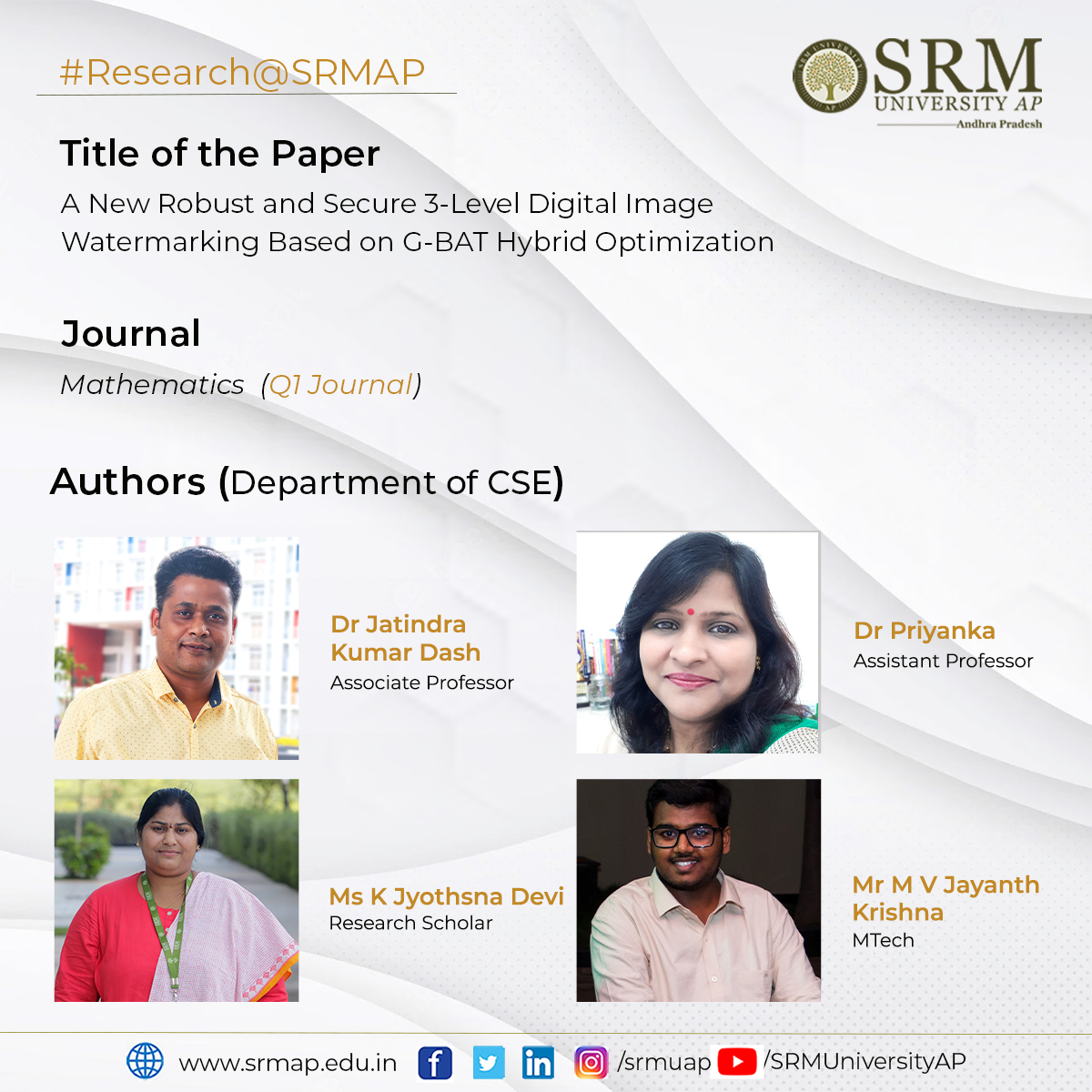 The research team from the Department of Computer Science and Engineering proposes a research scheme to address security concerns in the transmission of digital images of aerial Remote sensing images over the Internet. Assistant Professor Dr Priyanka, Assistant Professor Dr Jatindra Kumar Dash, research scholar Ms K Jyothsna Devi, and BTech student Mr. M V Jayanth Krishna, published the paper A New Robust and Secure 3-Level Digital Image Watermarking Based on G-BAT Hybrid Optimization in the Mathematics Journal SCI, a Q1 Journal with an Impact Factor of 2.9. The research project combats various threats in the transmission of Remote sensing images, such as copyright protection, copy control, and unauthorized access.
The research team from the Department of Computer Science and Engineering proposes a research scheme to address security concerns in the transmission of digital images of aerial Remote sensing images over the Internet. Assistant Professor Dr Priyanka, Assistant Professor Dr Jatindra Kumar Dash, research scholar Ms K Jyothsna Devi, and BTech student Mr. M V Jayanth Krishna, published the paper A New Robust and Secure 3-Level Digital Image Watermarking Based on G-BAT Hybrid Optimization in the Mathematics Journal SCI, a Q1 Journal with an Impact Factor of 2.9. The research project combats various threats in the transmission of Remote sensing images, such as copyright protection, copy control, and unauthorized access.
Abstract
This contribution applies tools from the information theory and soft computing (SC) paradigms to the embedding and extraction of watermarks in aerial remote sensing (RS) images to protect copyright. By the time 5G came along, Internet usage had already grown exponentially. Regarding copyright protection, the most important responsibility of the digital image watermarking (DIW) approach is to provide authentication and security for digital content. The main goal of the paper is to provide authentication and security to aerial RS images transmitted over the Internet by the proposal of a hybrid approach using both the redundant discrete wavelet transform (RDWT) and the singular value decomposition (SVD) schemes for DIW. Specifically, SC is adopted in this work for the numerical optimisation of critical parameters. Moreover, 1-level RDWT and SVD are applied to digital cover images and singular matrices of LH and HL sub-bands are selected for watermark embedding. Further selected singular matrices S LH and S HL are split into 3 × 3 non-overlapping blocks, and diagonal positions are used for watermark embedding. Three-level symmetric encryption with a low computational cost is used to ensure higher watermark security. A hybrid grasshopper–BAT (G- BAT) SC-based optimization algorithm is also proposed to achieve high-quality DIW outcomes, and a broad comparison against other methods in the state-of-the-art is provided. The experimental results have demonstrated that the proposal provides high levels of imperceptibility, robustness, embedding capacity, and security when dealing with DIW of aerial RS images, even higher than the state-of-the-art methods.
The proposed scheme is easily dumped into the sender and receiver machines to work readily. MATLAB platform is the only requirement. Researchers aspire to design new image watermarking schemes using machine learning and deep learning techniques. For this project, they have collaborated with Professor José Santamaría from the Department of Computer Science, University of Jaén, and Professor Antonio Romero-Manchado from the Department of Cartographic Engineering, Geodesy, and Photogrammetry, University of Jaén.

